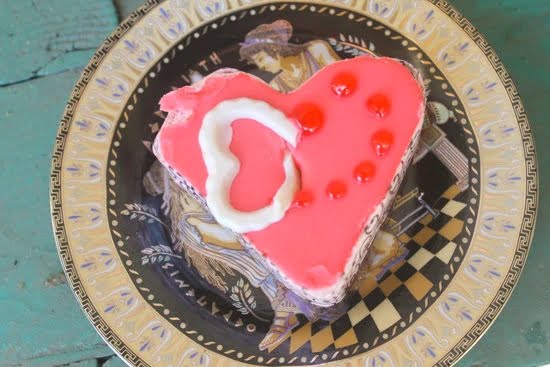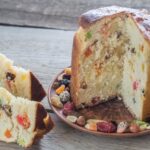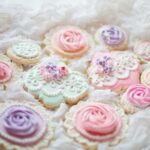Cakes With Buttercream Icing and Fondant Decorations are the perfect combination for cake lovers and baking enthusiasts alike. These delectable treats not only satisfy our taste buds but also awaken our creativity with their smooth textures and intricate designs.
Buttercream icing and fondant have distinct characteristics that set them apart. Buttercream icing is made from butter, powdered sugar, and flavorings, resulting in a creamy and spreadable texture. On the other hand, fondant is a pliable icing made from sugar, water, and gelatin that can be rolled out and draped over cakes for a sleek finish.
The versatility of buttercream icing allows for various techniques to achieve smooth, fluffy textures. From the classic American buttercream to the silky Swiss meringue buttercream, there are endless possibilities to explore. Meanwhile, fondant decorations enable bakers to unleash their creative side by sculpting intricate designs, adding delicate flowers or creating realistic figurines.
When used together, buttercream icing and fondant decorations create an exquisite synergy that elevates cake decorating to new heights. The softness of the buttercream complements the clean lines and sharp edges achieved with fondant, resulting in visually stunning cakes that are as delicious as they are beautiful.
So whether you’re a seasoned baker looking to expand your repertoire or a novice eager to learn the art of cake decoration, exploring the world of cakes with buttercream icing and fondant decorations will allow you to discover limitless possibilities in creating edible masterpieces. Get ready to sharpen your skills and embark on a journey where taste meets artistry.
Understanding the Difference
Buttercream icing and fondant are two popular cake decorating techniques that offer unique textures and styles. Understanding the differences between these two options can help you make an informed decision for your next baking project.
Buttercream Icing
Buttercream icing is a classic choice for cake decorators. Made from butter, powdered sugar, and flavoring, it creates a smooth and creamy texture that is perfect for filling, crumb coating, and piping designs onto cakes. Buttercream can be easily colored with food coloring to achieve any desired shade, making it versatile for various themes or aesthetics.
One of the benefits of using buttercream icing is its taste. The rich and buttery flavor complements any cake flavor and can be customized by incorporating different extracts or flavorings. In addition, buttercream allows for more control when it comes to texture. It can be made light and fluffy or denser depending on personal preference.
Fondant
Fondant, on the other hand, is a pliable sugar dough that is rolled out and draped over cakes to create a smooth and polished finish. It provides a sleek canvas for intricate decorations such as sculpted figures, flowers, or patterns. Fondant decorations have gained popularity due to their ability to create clean lines and precise designs.
Unlike buttercream icing which has a soft texture, fondant dries to a firm consistency. This makes it easier to handle when adding intricate details or creating three-dimensional shapes. Fondant also has a longer shelf life compared to buttercream icing, allowing for advanced preparations before assembling the final product.
Although fondant can be flavored like buttercream icing through the addition of extracts or oils, some people may find its taste too sweet or lacking in comparison to the richness of buttercream icing.
Understanding the difference between these two cake decorating techniques is essential before deciding which one suits your desired design or theme better. While buttercream icing is known for its taste and versatility, fondant offers a sleek and polished finish with precise designs. Both techniques have their strengths, and a combination of buttercream icing and fondant decorations can create stunning cakes that highlight the best of both worlds.
The Versatility of Buttercream
Buttercream icing is a popular choice in cake decorating due to its versatility and ability to create smooth and fluffy textures. Whether you are a beginner or an experienced baker, mastering the art of working with buttercream can open up a whole world of creative possibilities for your cakes.
Creating Smooth Buttercream Textures
One of the key techniques in achieving a smooth buttercream texture is proper cake preparation. Before applying the buttercream, make sure to level the top of your cake and trim any uneven edges. This will create a solid foundation for your icing and help achieve a polished finish.
For a smooth texture, start by applying a thin layer of buttercream all over the cake using an offset spatula. This first layer is known as the crumb coat and helps seal in any loose crumbs. Once the crumb coat has set, apply another layer of buttercream, this time using long, smooth strokes with an offset spatula or bench scraper. Keep rotating your cake stand as you work to ensure even coverage.
Adding Fluffy Buttercream Texture
If you prefer a more fluffy texture on your cakes, there are techniques you can employ to achieve it. After applying the base layers of buttercream, use an icing comb or textured roller to create patterns or ridges on the sides of your cake. This will give it a unique and visually appealing look.
Another way to add texture is by using piping tips and bags filled with different nozzle designs. Swirls, rosettes, and ruffles can all be created by varying pressure while piping onto your cake. Play around with different designs until you find one that suits your desired aesthetic.
By experimenting with these techniques and finding new ways to work with buttercream icing, you can create cakes that not only taste delicious but also have visually stunning textures that will impress anyone who sees them. The sky’s the limit when it comes to the possibilities of buttercream.
Fondant Decorations
When it comes to cake decorating, fondant is a versatile and popular choice for creating stunning and intricate designs. Fondant is made from a mixture of sugar, water, and gelatin and can be rolled out into thin sheets or molded into various shapes. This pliable icing allows for endless possibilities in terms of design and creativity.
One of the advantages of working with fondant is the ability to achieve smooth and flawless finishes on cakes. Unlike buttercream icing, which may have visible swirls or peaks, fondant creates a sleek canvas that serves as the perfect base for artistic decorations. Whether you’re looking to create an elegant wedding cake or a playful birthday cake, fondant can elevate your designs to new heights.
To maximize your creative potential with fondant decorations, it’s essential to have the right tools and techniques at your disposal. Some must-have tools include:
- Fondant Rolling Pin: A rolling pin specifically designed for working with fondant will help you roll out the icing evenly and prevent sticking.
- Fondant Smoother: This tool helps you achieve that sought-after super smooth finish on your cakes.
- Fondant Cutters: Various sizes and shapes of cutters allow you to create different decorations such as flowers, leaves, or even intricate lace patterns.
- Modeling Tools: These specialized tools are great for adding texture and shaping delicate details on your fondant decorations.
Once you have the necessary tools, it’s time to unleash your creativity. Whether you’re a beginner or an experienced cake decorator, experimenting with different techniques can lead to incredible results. Some popular techniques include:
- Embossing: Using textured mats or embossing rollers, you can imprint beautiful patterns onto your fondant.
- Marbling: By blending different colors of fondant together, you can create stunning marbled effects that add visual interest to your designs.
- Ruffling: Creating ruffles on fondant can give a romantic, whimsical feel to your cake decorations.
- 3D Figures: Fondant is perfect for sculpting three-dimensional figures such as animals or characters, allowing you to bring your cake designs to life.
Remember, practice makes perfect when it comes to working with fondant. Don’t be discouraged if your first attempts don’t turn out exactly as planned – with time and patience, you’ll master the art of fondant decorations and unlock endless possibilities for creative expression.
The Best of Both Worlds
Combining buttercream icing and fondant decorations allows for the best of both worlds when it comes to cake decorating. This winning combination offers a beautiful aesthetic appeal while also providing versatility in texture and design. By combining these two techniques, you can create cakes that are not only visually stunning but also delicious to taste.
One way to achieve the best of both worlds is by using a layer of buttercream icing as the base for your cake. Buttercream icing is known for its smooth and fluffy texture, making it perfect for creating a clean and polished canvas for your fondant decorations. The buttery flavor of the icing also adds a delicious element to the overall taste of the cake.
To complement the smoothness of the buttercream, using fondant decorations can add an artistic touch to your cake design. Fondant is a pliable sugar paste that can be rolled out and molded into various shapes and designs. It allows you to create intricate details such as flowers, ribbons, or even sculpted figures that would be difficult to achieve with just buttercream alone. This opens up endless possibilities for creativity and customization in your cake designs.
Combining buttercream icing with fondant decorations requires specific techniques and tools to ensure a seamless integration between the two elements. It is essential to properly apply the fondant onto the buttercream without causing any air bubbles or imperfections. Additionally, different methods such as embossing or painting can be used to enhance the appearance of the fondant decorations further.
Overall, combining buttercream icing with fondant decorations offers a unique opportunity for cake decorators to elevate their skills and create stunning cakes that are not only visually appealing but also delicious. The contrast between the smoothness of buttercream and the intricacy of fondant creates a beautiful balance in both texture and design. Whether you’re decorating a simple birthday cake or an elaborate wedding centerpiece, this combination is sure to impress both visually and tastefully.
Tips and Tricks for Working with Buttercream Icing
Buttercream icing is a popular choice for cake decorating due to its delicious taste and smooth texture. However, working with buttercream can sometimes be a challenge. Here are some tips and tricks to help you achieve the best results when using buttercream icing.
- Use Room Temperature Butter: To achieve a smooth and fluffy texture, make sure to use room temperature butter when making your buttercream. Cold butter can result in lumps and an uneven consistency.
- Sift Your Powdered Sugar: Before adding powdered sugar to your buttercream mixture, it’s important to sift it first. This helps remove any lumps or clumps that may affect the final texture of your icing.
- Gradually Add Liquid Ingredients: When adding liquid ingredients such as milk or vanilla extract, do so gradually. This allows you to control the consistency of your buttercream and prevent it from becoming too thin or runny.
- Use Piping Bags with Different Tips: Piping bags with various tips allow you to create different designs and textures with your buttercream icing. Experiment with different tip shapes and sizes to achieve unique decorations on your cakes.
- Keep Your Tools Clean: It’s important to keep your tools clean while working with buttercream icing, especially if you’re using multiple colors or flavors. This prevents cross-contamination and ensures that each color remains vibrant and true.
By following these tips and tricks, you’ll be able to work with buttercream icing more confidently and create beautifully decorated cakes that are both delicious and visually stunning. Remember, practice makes perfect, so don’t be afraid to experiment and try new techniques.
Mastering the Art of Fondant Decorations
When it comes to cake decorating, fondant decorations can add a touch of elegance and sophistication to any design. However, working with fondant requires practice and a good understanding of techniques and tools. In this section, we will delve into the art of mastering fondant decorations, exploring various techniques and essential tools that will help you create stunning designs.
One fundamental technique when working with fondant is rolling it out to achieve a smooth, even surface. To prevent sticking, sprinkle powdered sugar or use cornstarch on your work surface before rolling out the fondant. Roll from the center outward in all directions, rotating the fondant as needed to maintain an even thickness. If air bubbles form while rolling, gently prick them with a pin and smooth out the fondant.
Another important skill to master is cutting and shaping fondant. This allows you to create various shapes such as flowers, bows, or intricate patterns. To cut through thicker pieces of fondant, use sharp knives or specialized cutting tools such as cookie cutters or shape cutters for more precise results.
Embossing is another popular technique in fondant decoration. By using embossing mats or textured rolling pins, you can create beautiful patterns and designs on your fondant surface. Simply press the mat or pin onto the rolled-out fondant firmly but gently to transfer the pattern.
Lastly, adding color to your fondant can elevate your cake design even further. Gel-based food coloring is recommended for tinting fondant as it does not alter its consistency. Start by adding small amounts of coloring at a time until you achieve your desired shade. Remember that dark colors will require more coloring than light ones.
Showcase
Cake decorating is an art form that allows bakers to unleash their creativity and showcase their skills. When it comes to creating stunning cake designs, the combination of buttercream icing and fondant decorations can take your creations to the next level. In this section, we will explore some jaw-dropping cake designs that incorporate both elements.
One popular design that showcases the versatility of buttercream icing and fondant decorations is the floral-themed cake. By using buttercream icing as a base, bakers can create a smooth canvas on which they can add delicate fondant flowers in various colors and sizes. The result is a visually stunning cake that looks almost too beautiful to eat.
Another showcase-worthy design is the multi-tiered wedding cake. Buttercream icing is commonly used to achieve a sleek and elegant look for each tier, while fondant accents such as intricate lace patterns or sculpted figurines bring an element of sophistication and personalization. This combination creates a show-stopping centerpiece for any wedding celebration.
For those looking for a fun and whimsical design, consider a children’s birthday cake with buttercream icing and fondant decorations. Bakers can create adorable characters or themed elements using fondant, while the buttercream icing serves as the perfect backdrop to make these creations come to life. From cartoon characters to animals and superheroes, the possibilities are endless when it comes to designing cakes that will bring joy to little ones.
| Cake Design | Description |
|---|---|
| Floral-themed cake | A visually stunning cake with buttercream icing as a smooth canvas for delicate fondant flowers. |
| Multi-tiered wedding cake | Elegant tiers of buttercream icing decorated with fondant lace patterns or sculpted figurines. |
| Children’s birthday cake | Fondant decorations bring adorable characters or themed elements to life on a buttercream-iced cake. |
Where to Find Inspiration
Finding inspiration for cake decorating can sometimes be a challenge, especially when you want to create stunning designs with buttercream icing and fondant decorations. Luckily, there are many resources available online and offline that can help fuel your creativity and provide you with endless ideas.
One of the first places to look for inspiration is on websites dedicated to cake decorating. These websites often feature galleries of beautifully decorated cakes, showcasing a wide range of styles and techniques. Some popular cake decorating websites include Cake Central, My Cake School, and The Cake Blog. These sites not only offer photos for inspiration but also provide tutorials and tips to help you improve your skills.
In addition to websites, books dedicated to cake decorating can also be great sources of inspiration. Many talented cake decorators have published their own books, sharing their knowledge and showcasing their best designs. Some notable books include “Cake Decorating with Buttercream” by Valeri Valeriano & Christina Ong, “The Contemporary Buttercream Bible” by Valeri Valeriano & Christina Ong, and “The Complete Photo Guide to Cake Decorating” by Autumn Carpenter.
Lastly, don’t forget about social media. Instagram, Pinterest, and Facebook are all full of talented cake decorators who share their work online. By following accounts that specialize in cake decorating or joining cake decorating groups on Facebook, you’ll have a never-ending stream of beautiful cakes to inspire you.
Finding inspiration is just the first step in creating stunning cakes with buttercream icing and fondant decorations. With these resources at your fingertips, you’ll have all the ideas you need to elevate your cake decorating skills and create truly impressive designs that will leave everyone in awe.
Conclusion
In conclusion, mastering the art of cake decorating can be taken to a whole new level with the combination of buttercream icing and fondant decorations. These two elements bring different textures and design possibilities that allow you to unleash your creativity and create stunning cake designs.
Buttercream icing offers versatility in its smooth and fluffy texture, providing a great canvas for creating various designs. Whether you want to pipe intricate patterns or achieve a soft and elegant finish, buttercream allows for endless possibilities. By learning the tips and tricks for working with buttercream icing, you can confidently create beautiful cakes that are not only visually appealing but also taste delicious.
On the other hand, fondant decorations offer a different dimension to cake decorating. With fondant, you can sculpt intricate shapes, add fine details, and even create 3D designs. It allows you to truly elevate your cake decorating skills by adding depth and dimension to your creations. Mastering the techniques and tools needed for working with fondant will open up endless opportunities for creating show-stopping cake designs.
By combining buttercream icing and fondant decorations, you get the best of both worlds. Buttercream provides a delicious taste while fondant adds professional-looking details that can take your cakes from ordinary to extraordinary. The contrast between smooth buttercream and detailed fondant decorations creates visually striking designs that are sure to impress any crowd.
To further enhance your skills in this art form, there are many resources available online such as websites, books, and social media accounts dedicated to cake decorating inspiration. By following these sources, you can stay up-to-date with the latest trends in cake design and gain inspiration for your own creations.
Frequently Asked Questions
Can I put fondant decorations on a buttercream cake?
Yes, it is absolutely possible to put fondant decorations on a buttercream cake. In fact, this combination is quite common in cake decorating.
Buttercream provides a smooth and creamy base for the fondant to adhere to, allowing you to create stunning designs and intricate details on your cake. Just make sure that the buttercream has crusted or set slightly before applying the fondant decorations, as this will ensure they stay in place.
Will fondant decorations melt on buttercream?
Fondant decorations typically do not melt on buttercream unless they are exposed to extreme heat or humidity. Buttercream itself does not generate enough heat to cause fondant to melt, especially if the buttercream has been properly chilled.
However, it’s important to be mindful of hot and humid environments, such as direct sunlight or high temperatures, as these can soften the buttercream and potentially affect the stability of the fondant decorations.
How far in advance can I put fondant decorations on a buttercream cake?
The timeframe for placing fondant decorations on a buttercream cake varies depending on various factors such as the climate, design complexity, and personal preference. In general, it is advisable to apply fondant decorations no more than 24 hours before serving the cake.
This allows enough time for the decorations to set firmly onto the buttercream without risking any potential sagging or drooping. However, if you live in a particularly humid area or have a particularly intricate design that requires ample drying time, it may be best to apply them closer to serving time or even just a few hours prior.

Welcome to our cake decorating blog! My name is Destiny Flores, and I am the proud owner of a cake decorating business named Cake Karma. Our mission is to provide delicious, beautiful cakes for all occasions. We specialize in creating custom cakes that are tailored specifically to each customer’s individual needs and tastes.





